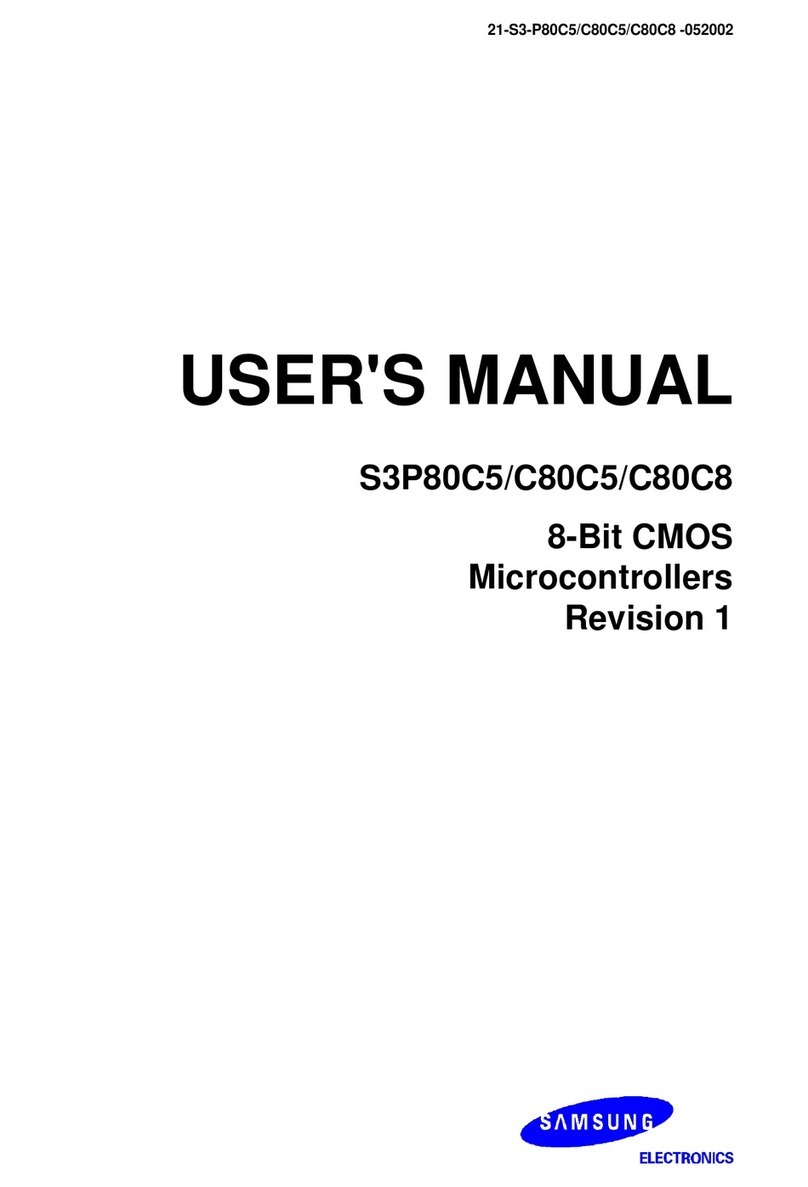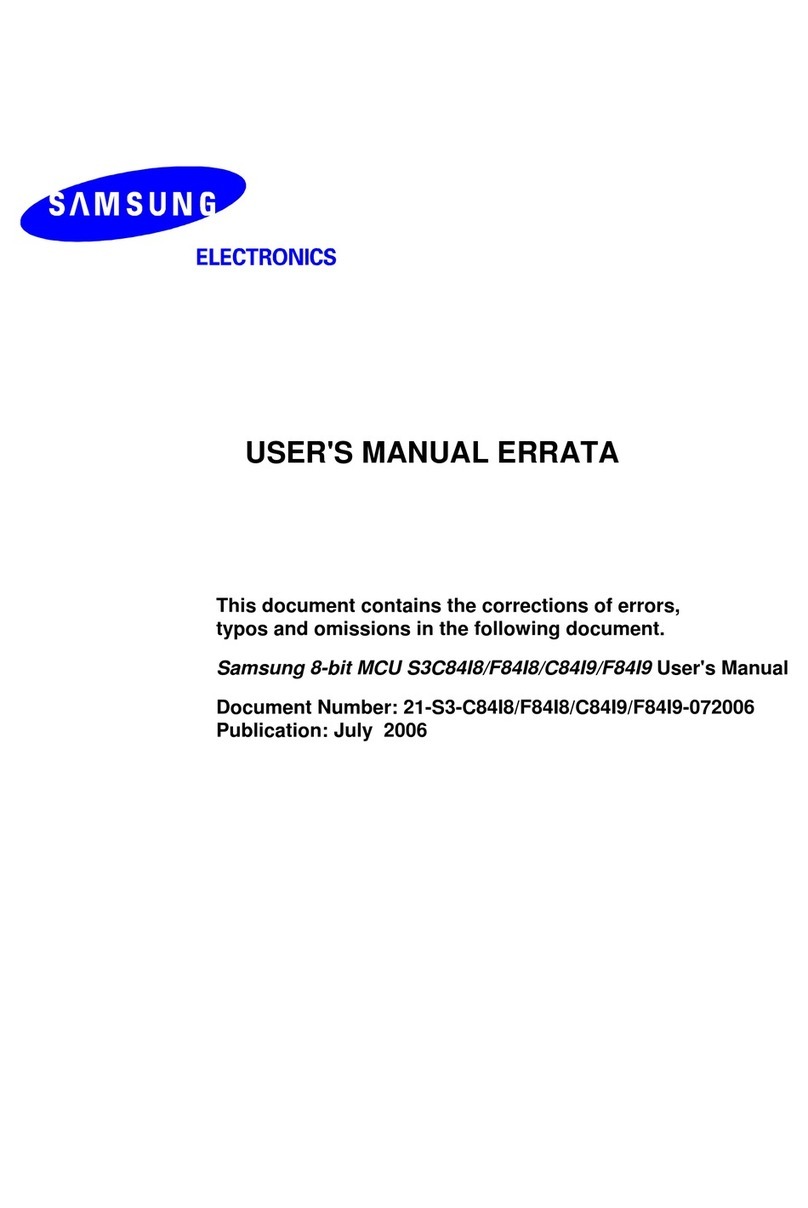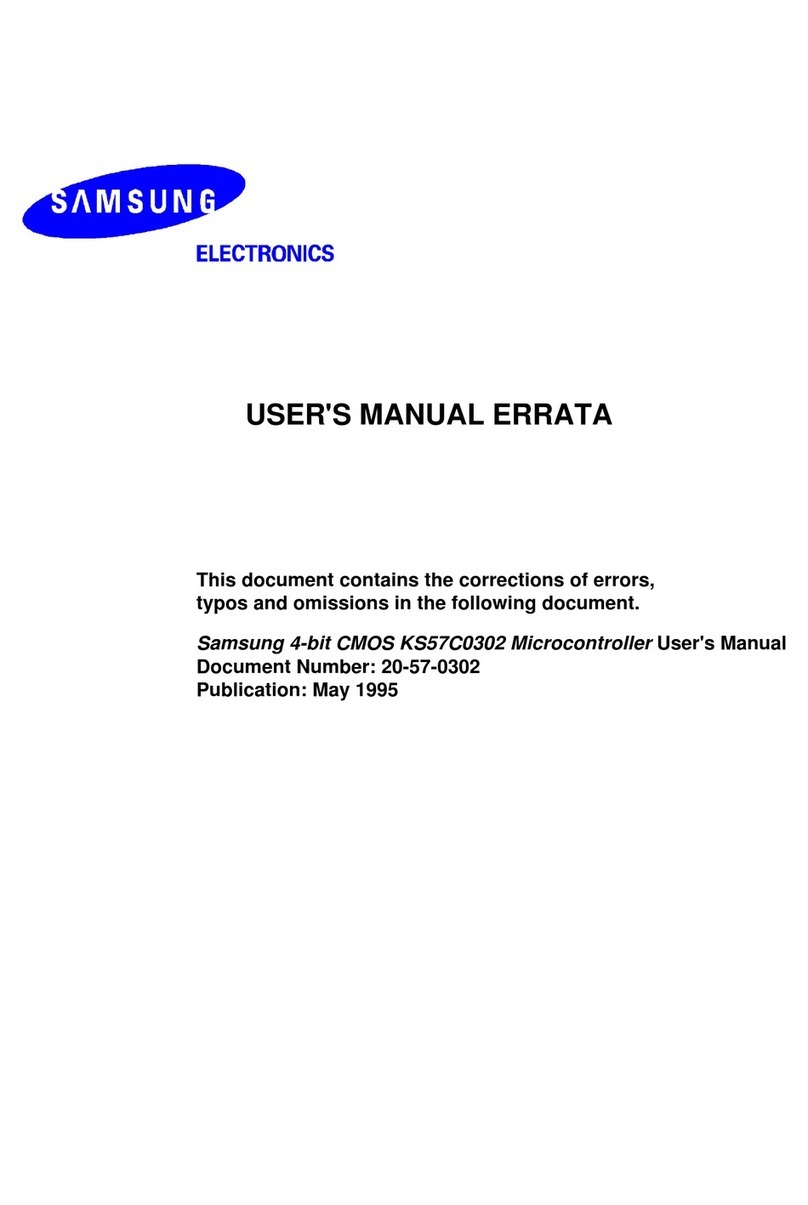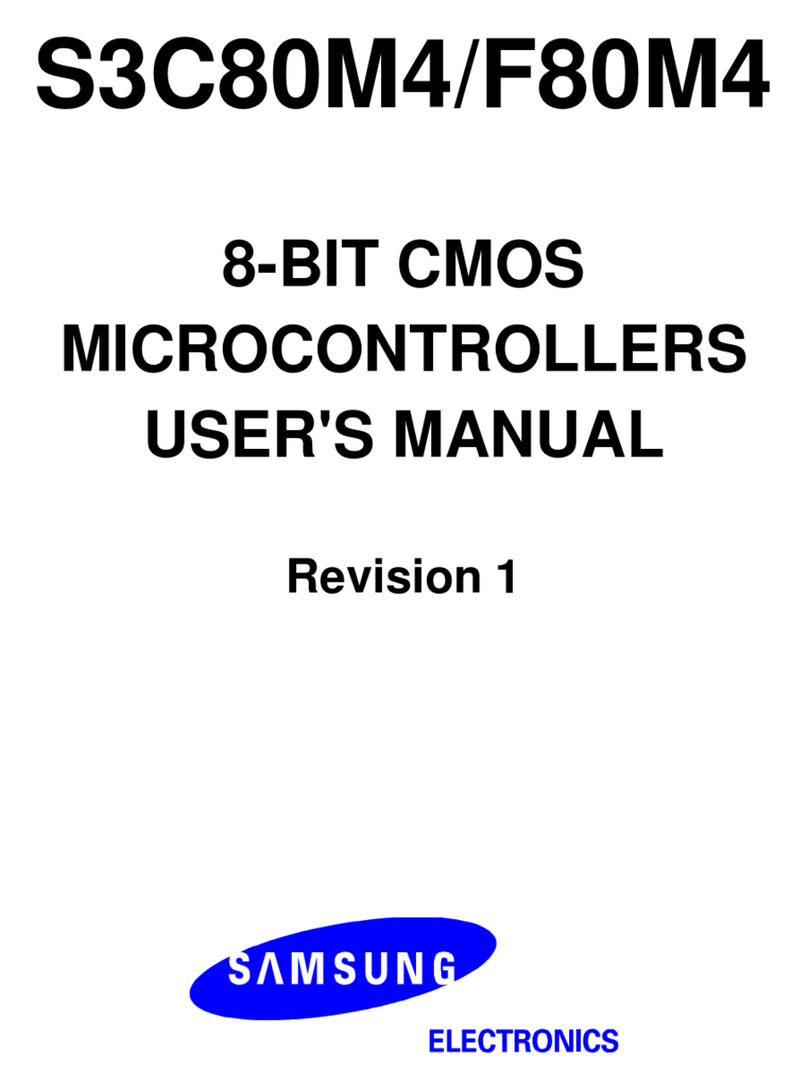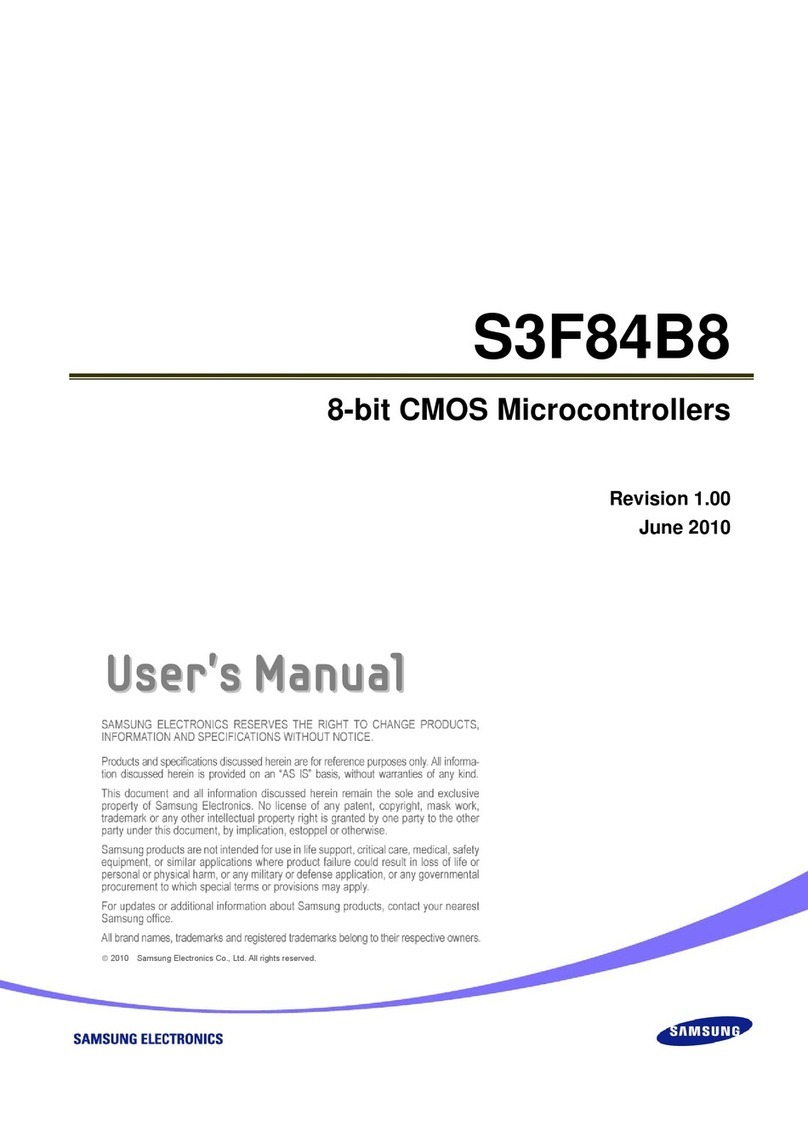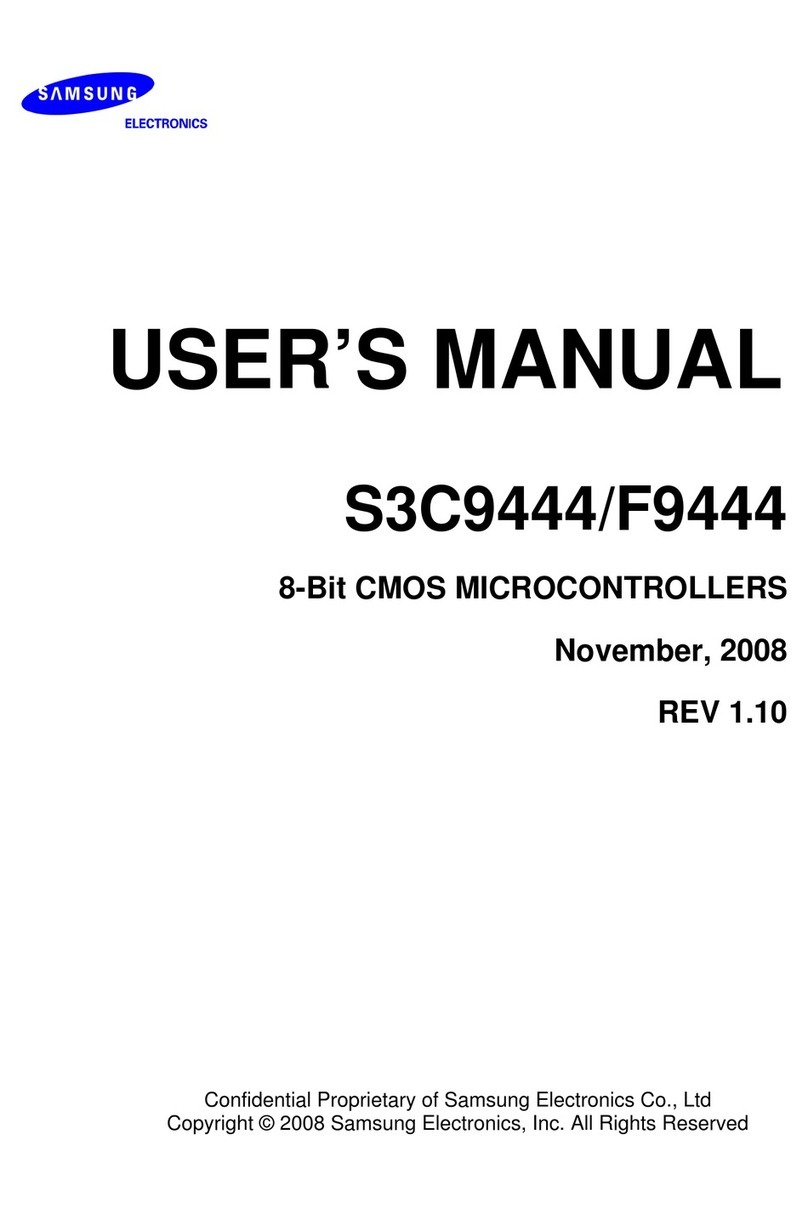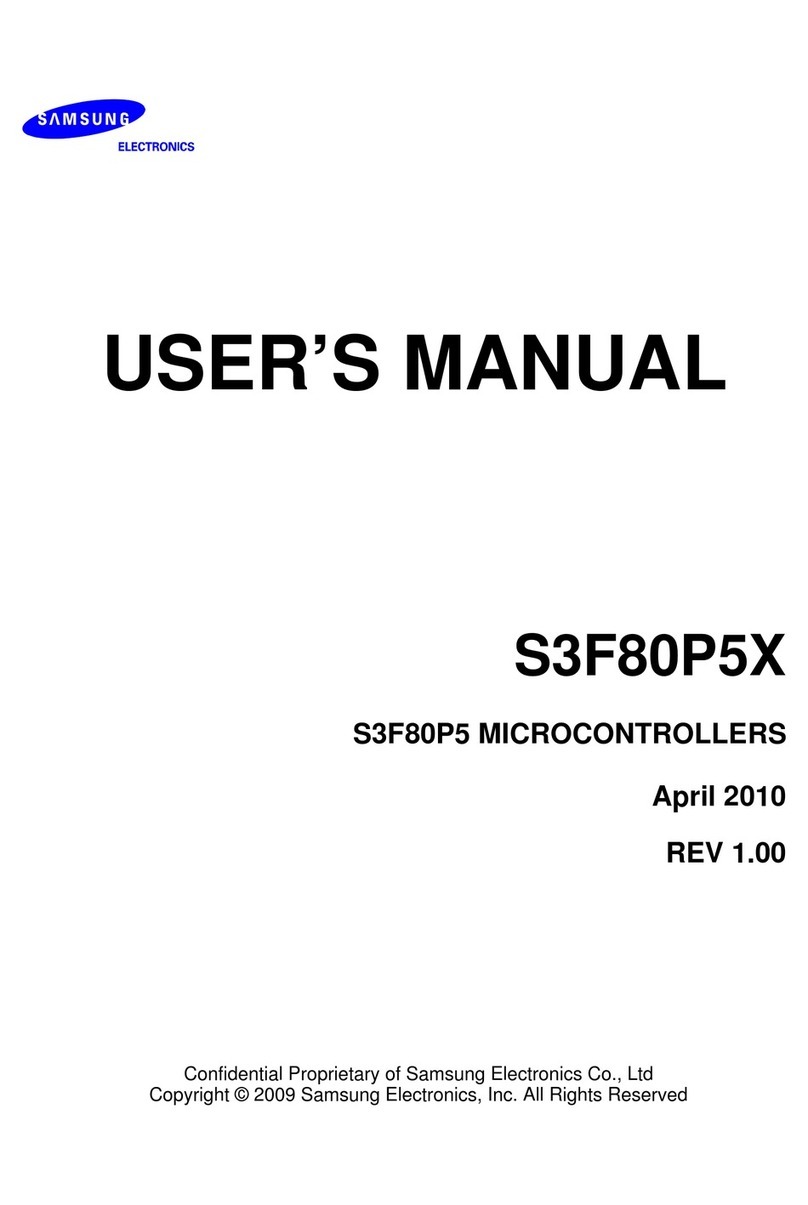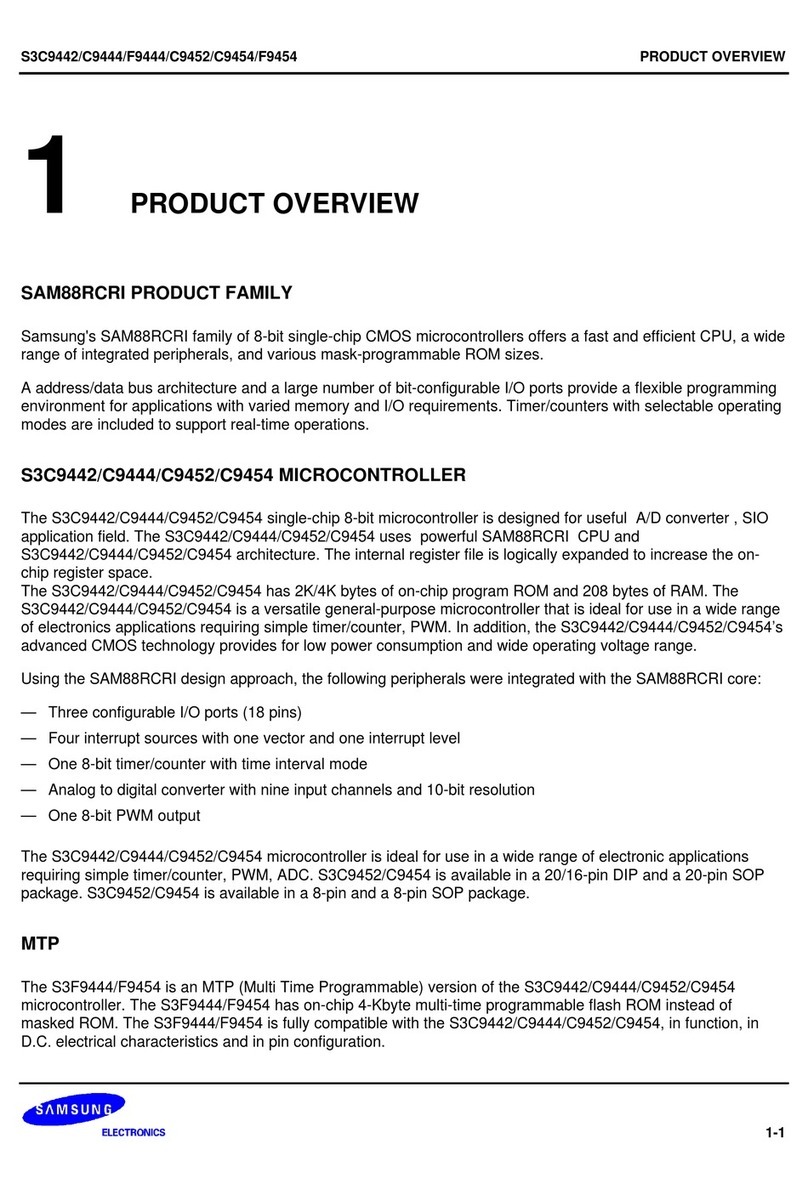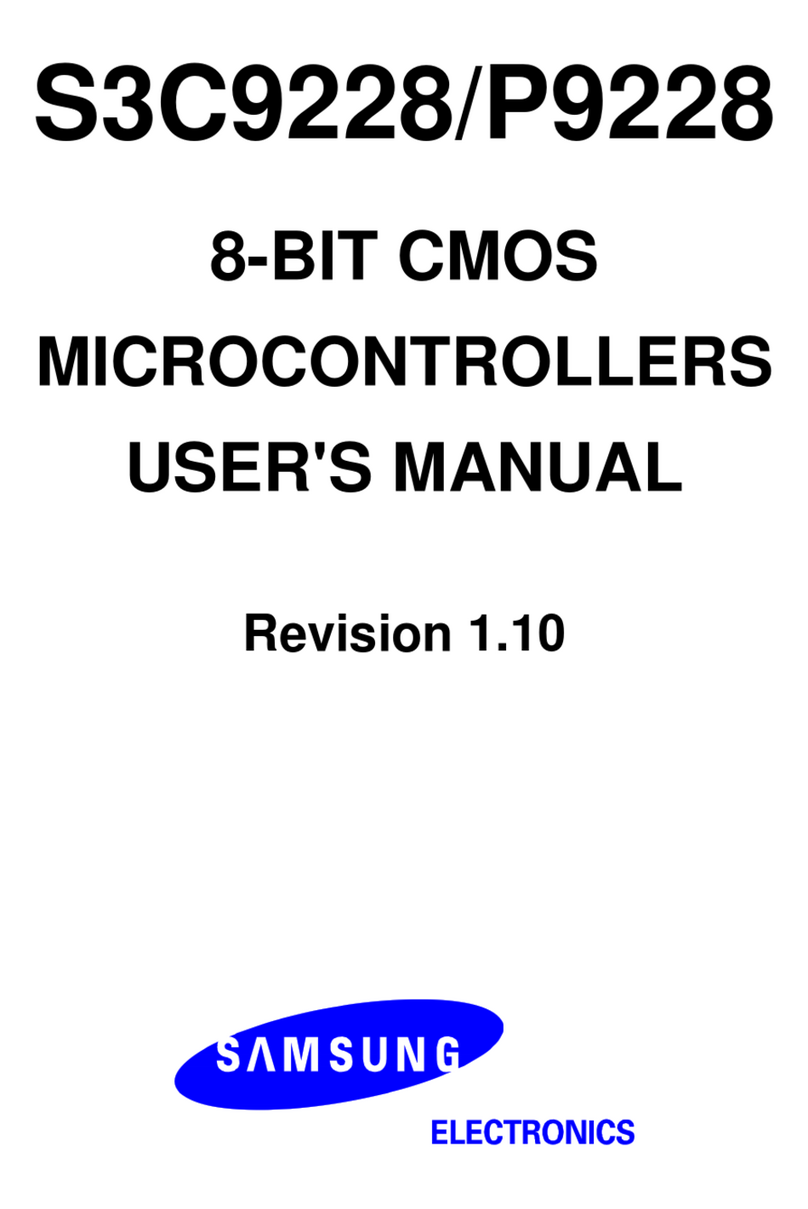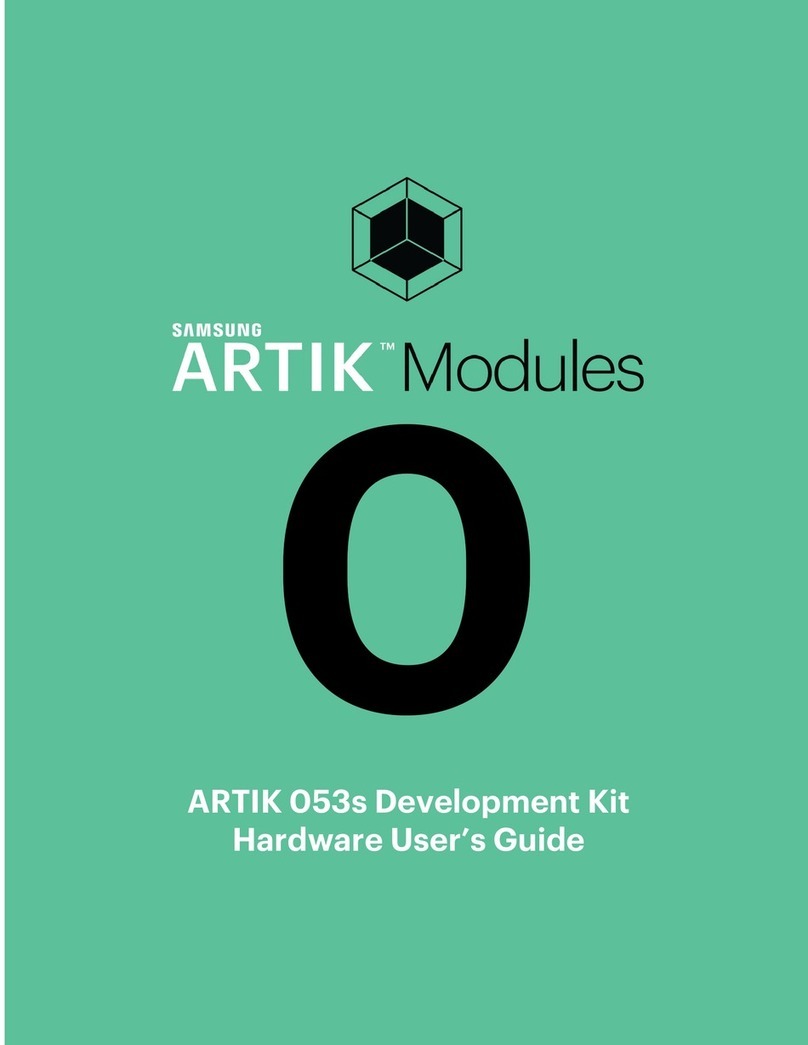
PRODUCT OVERVIEW KS86C6004/C6008/P6008 MICROCONTROLLER (Preliminary Spec)
1-6
PIN DESCRIPTIONS
Table 1-1. KS86C6004/C6008/P6008 Pin Descriptions
Pin
Names Pin
Type Pin
Description Circuit
Number Pin
Numbers Share
Pins
P0.0-P0.7 I/O Bit-programmable I/O port for Schmitt trigger
input or open-drain output. Port0 can be
individually configured as external interrupt
inputs. Pull-up resistors are assignable by
software.
B 36–29
(30–23) INT2
P1.0-P1.7 I/O Bit-programmable I/O port for Schmitt trigger
input or open-drain output. Pull-up resistors are
assignable by software.
B 28–21
(22–15) –
P2.0-P2.7 I/O Bit-programmable I/O port for Schmitt trigger
input or open-drain output. Port2 can be
individually configured as external interrupt
inputs. Pull-up resistors are assignable by
software.
B 3–10
(41–44, 1–4) INT0
P3.0-P3.3 I/O Bit-programmable I/O port for Schmitt trigger
input, open-drain or push-pull output. P3.3 can
be used to system clock output(CLO) pin.
C 2, 1, 42, 41
(40–37) P3.3/CLO
P4.0-P4.3 I/O Bit-programmable I/O port for Schmitt trigger
input or open-drain output or push-pull output.
Port4 can be individually configured as external
interrupt inputs. In output mode, pull-up resistors
are assignable by software. But in input mode,
pull-up resistors are fixed.
D 16, 17, 19, 20
(10, 11, 13,
14)
INT1
D+/D- I/O Only be used USB tranceive/receive port; D+/D-. – 40–39 (36-35) –
3.3 VOUT –3.3 V output from internal voltage regulator – 38 (34) –
XIN, XOUT –System clock input and output pin
(crystal/ceramic oscillator, or external clock
source)
– 14, 13
(8, 7) –
INT0
INT1
INT2
I External interrupt for bit-programmable port0,
port2 and port4 pins when set to input mode. –3–10, 16,17,
19, 20, 29–36
(30–23, 41–
44, 1–4, 10,
11, 13, 14)
PORT2/
PORT4/
PORT0
RESET IRESET signal input pin. Schmitt trigger input with
internal pull-up resistor. A 18 (12) –
TEST I Test signal input pin (for factory use only; must
be connected to VSS)– 15 (9) –
VDD – Power input pin – 11 (5) –
VSS1,VSS2 – Vss1 is a ground power for CPU core.
Vss2 is a ground power for I/O and OSC block. – 12, 37
(6, 31) –
NC – No connection – –
(32, 33) –
NOTE: Pin numbers shown in parenthesis '( )' are for the 44-QFP package; others are for the 42-SDIP package.



